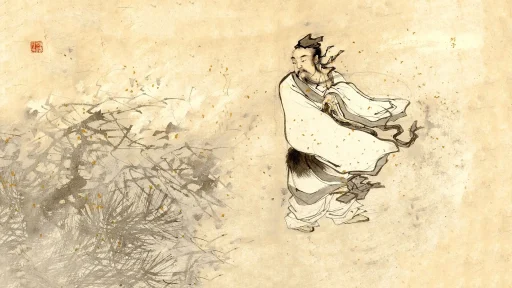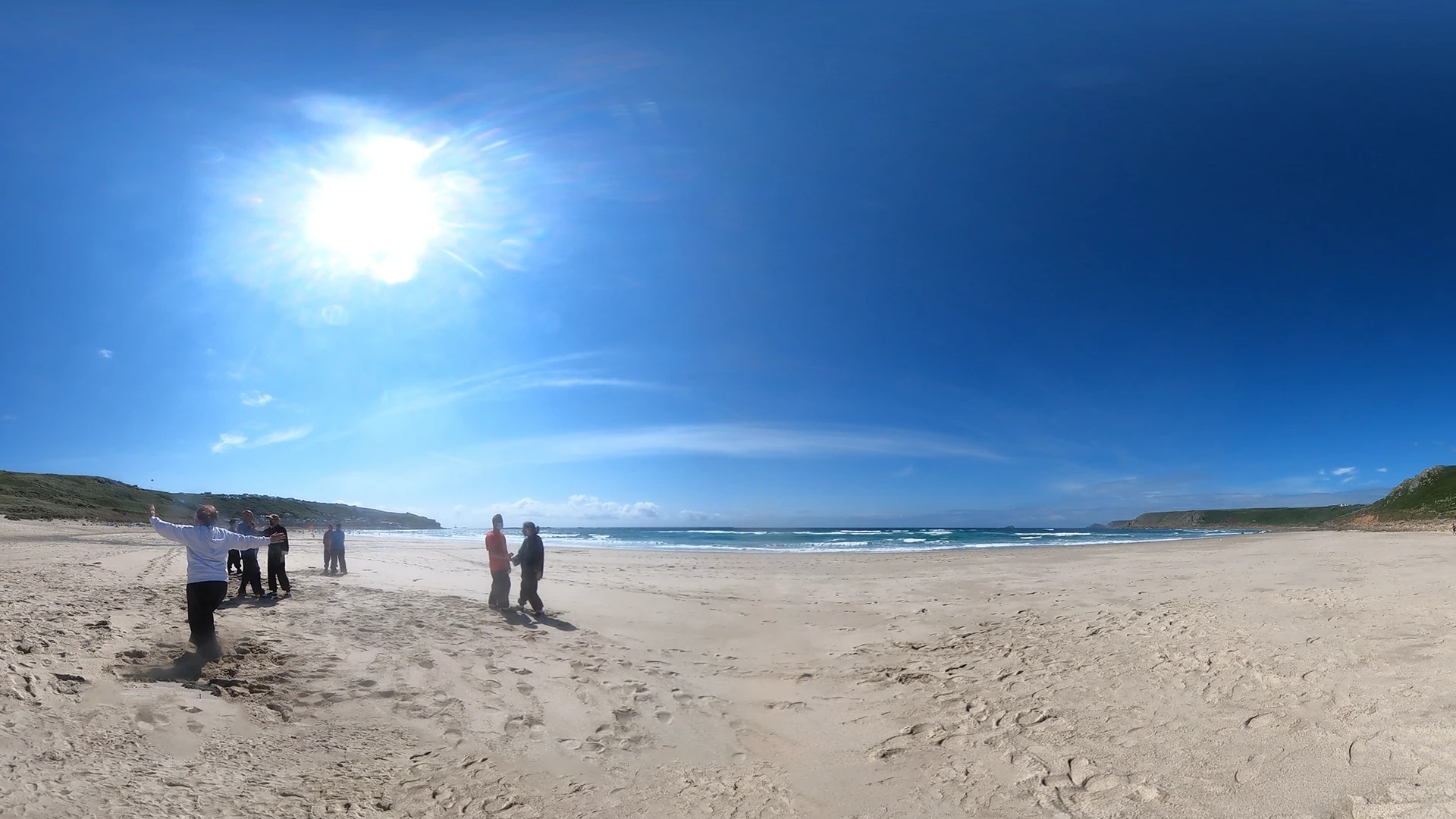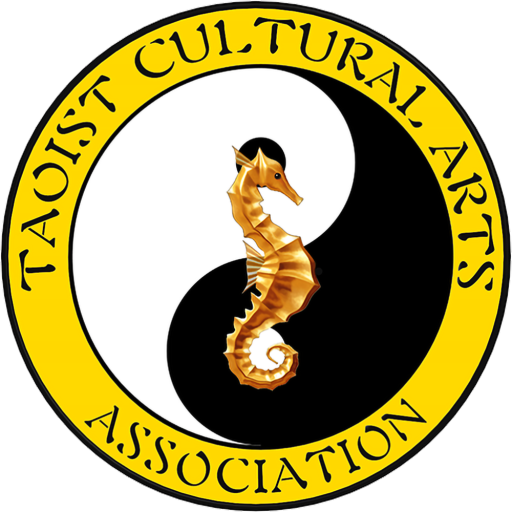
Wuwei, a concept deeply rooted in Taoist philosophy, holds a significant place in the practice of Tai Chi. Often translated as “non-action,” it is more about acting without resistance or forcing natural processes. The concept of wuwei involves being present in the moment and responding appropriately to situations without interfering with their natural course. It is not a passive approach, but an active engagement with the world around us in a way that is in tune with the flow of nature.
According to Taoist philosophy, the source of all things is the Tao or the Way, which is an ultimate reality that goes beyond all dualities. It is impossible to describe the Tao with words, but it can be experienced through direct intuition. It is the underlying order of the universe and the source of all life. To live in harmony with the Tao, we must let go of our desires, judgments, and attachments, and allow ourselves to be guided by the natural order of things.
Wuwei is not just a theoretical concept but a practical one too. It can be observed in the way we move, breathe, and interact with others. In Tai Chi, wuwei is embodied in the practice of slow, flowing movements that follow the natural rhythms of the body and breath. The purpose is not to force the movements or achieve a particular goal, but rather to allow the movements to arise spontaneously from within. The goal is to be in tune with our inner selves and the world around us, and to act in a way that is both effortless and effective.
To illustrate the concept of wuwei, let’s look at some stories from ancient Taoist philosophers.
Liezi
Liezi was an early Taoist, he could ride on the wind.
In the Liezi (c. 3rd century BCE) there is a story about a butcher named Ding.
One day, a prince came to Ding’s shop and asked him to cut up an ox. Ding did so with ease, using his knife as if it were an extension of his hand. The prince was amazed and asked Ding how he was able to cut up the ox so effortlessly. Ding replied,
“I don’t look at the ox with my eyes, but with my mind. My mind tells my hand where to go, and the knife follows. I let go of my ego and allow the natural order of things to guide me.”
This story demonstrates the idea of wuwei as effortless action, where the mind and body are in harmony and work together seamlessly. By letting go of his ego and allowing the natural order of things to guide him, Ding was able to perform his task with ease and skill.
The story of Liezi riding the wind is a great example of wuwei in action. In the story, Liezi, a Taoist sage, was able to ride the wind effortlessly, without any effort or force on his part. This is the epitome of wuwei, as Liezi was able to let go of his ego, desires, and need to control his environment, allowing the natural flow of the universe to guide him.
The story also highlights the idea of non-doing or non-action, which is a central concept in Taoism. Non-action does not mean that one should do nothing, but rather that one should act without force or intention, allowing events to unfold naturally. This is what Liezi did when he rode the wind, he did not resist or try to control the wind, but rather allowed himself to be carried by it.
In the context of Tai Chi practice, the story of Liezi riding the wind reminds us to let go of our ego and need to control the movements of our bodies. Instead, we should allow our bodies to move naturally, without force or tension, and follow the flow of energy within us. This means letting go of any preconceived ideas about how we should move and allowing our bodies to respond spontaneously to the present moment.
Furthermore, the story of Liezi riding the wind also illustrates the idea of harmony with nature, another central concept in Taoism. By riding the wind, Liezi was able to connect with the natural world and move in harmony with it. In the same way, practicing Tai Chi allows us to cultivate a deeper connection with nature and move in harmony with the energy of the universe.
Overall, the story of Liezi riding the wind serves as a powerful reminder of the principles of wuwei and non-action, and their relevance to Tai Chi practice. By embracing these principles, we can develop a deeper understanding of our bodies, the natural world, and the interconnectedness of all things.
Zhuangzi
Zhuangi was a Taoist philosopher famous for his sense of humour.
In the Zhuangzi (c. 3rd century BCE) there is a story about a man training a fighting cockerel.
There once was a man who wanted his fighting rooster to be more ferocious. He took the rooster to a trainer. In a few weeks’ time he returned and saw that his rooster didn’t squawk as loudly.
“Not ready yet,” said the trainer. Two weeks later he saw that his rooster barely raised his neck feathers and wings.
“Not ready yet,” said the trainer. Another week passed. His rooster looked as tame and docile as a chick.
“You’ve ruined my fine fighting bird!” screamed the man at the trainer.
“Not at all,” the trainer replied, “See how calm and secure he is, how serenely strong he stands today. The other fighting birds take one look at him and they all run away!”
This story illustrates the idea of wuwei as less is more. Rather than making a fuss and drama, calmness and serenity prevails. This is a quality cultivated by the masters of martial arts above all else, to keep your head and avoid panic. To stick to your guns when facing adversity. The other birds cannot fathom the trained bird, they see only nothingness, no fear, no anger, they flee.
Laozi
Laozi wrote the most famous book of Taoism the Tao Teh Ching but paradoxically started it off by saying that the Tao of writing is not the true Tao.
One example of Wuwei in the Tao Te Ching (c. 4th century BCE) is in Chapter 17, where it is said:
“The best leaders are those the people hardly know exist. The next best is a leader who is loved and praised. Next comes the one who is feared. The worst one is the leader that is despised.”
This passage suggests that the most effective leaders are those who act with Wuwei, or non-action, by not drawing attention to themselves or forcing their will upon others. Instead, they allow things to unfold naturally and lead by example, without seeking personal glory or control. This way of leading is seen as harmonious and beneficial for both the leader and the people they serve.
Cooking a small fish can also be an example of Wuwei in the Tao Te Ching. In Chapter 64, it is said:
“A kingdom is like a great, low-lying river, The point where all the streams and torrents in the world converge.
If you can keep centered and true, The kingdom will be centered and true.
With Wuwei, the whole kingdom is refreshed, Without Wuwei, the kingdom becomes weary and oppressed.
Just as a small fish should not be over-handled, The ruler must not over-manage the people with force.
In this way, the Tao of Heaven is reflected in the land, And all things flourish without being commanded.”
This passage suggests that just as a small fish should not be over-handled when cooking, a ruler or leader should not try to control or manipulate their people too much. Instead, they should practice Wuwei by allowing things to unfold naturally and trusting in the natural order of things. By doing so, the kingdom will be refreshed and all things will flourish without the need for force or excessive intervention.
Tai Chi and Wuwei
The practice of wuwei in Tai Chi involves slow and flowing movements that align with the body’s natural rhythms and breathing. Instead of forcing the body into specific positions or movements, Tai Chi practitioners allow the movements to arise spontaneously from within, which cultivates awareness and sensitivity to the flow of energy in the body and environment.
With regular Tai Chi practice, individuals can achieve ease and relaxation in their movements, leading to reduced stress and improved well-being. This practice has several health benefits, such as enhancing balance, flexibility, and cardiovascular health while reducing symptoms of anxiety and depression.
Studies have also demonstrated that Tai Chi can decrease inflammation in the body, which is associated with chronic health conditions like diabetes, cardiovascular disease, and cancer. A 12-week study showed that participants who regularly practiced Tai Chi had lower inflammation levels than those in the control group.
Aside from the physical advantages, Tai Chi also provides a meditative aspect that aids in cultivating inner peace and calm. Focusing on the movements and breathing techniques helps quiet the mind and achieve deep relaxation, especially for those struggling with anxiety or stress-related disorders.
Wuwei in sticky hands
Wuwei refers to the principle of effortless action, which emphasizes a natural, relaxed approach to movement. One application of this principle is seen in the technique of “sticky hands,” a partner exercise in Tai Chi where practitioners learn to respond to and redirect their opponent’s energy without using force.
Sticky hands, sometimes called pushing hands, involves two practitioners standing facing each other and making contact with their arms. The goal is to maintain contact while sensing and responding to each other’s movements. The idea is to remain relaxed and rooted, allowing the body to move with the flow of the opponent’s energy instead of resisting it.
In sticky hands, Wuwei is essential in order to effectively neutralize an opponent’s force. Instead of opposing the incoming force with a counter-force, practitioners learn to redirect the energy by following its natural direction and turning it against the opponent. By doing so, they use the opponent’s energy against them, instead of using their own energy to try to overpower them.
Through the practice of sticky hands, Tai Chi practitioners develop sensitivity and awareness to the subtle movements and changes in energy around them. This can help in a self-defense situation, but also in everyday life by increasing one’s ability to respond appropriately to situations with greater ease and flexibility.
The Wuwei principle of effortless action is integral to the technique of sticky hands in Tai Chi, as it allows practitioners to move with the natural flow of an opponent’s energy and redirect it without the use of force. This approach can lead to greater efficiency, effectiveness, and overall well-being both in and outside of the practice of Tai Chi.
Wuwei in daily life
The principle of wuwei can be applied beyond the practice of Tai Chi and incorporated into our daily lives. By embracing non-action, we can reduce stress and foster balance and harmony. One method of incorporating wuwei is by developing awareness, which involves being fully present in the moment without any bias or distractions. By paying attention to our surroundings, emotions, and thoughts, we can respond to situations with more clarity and equanimity.
Another way to cultivate wuwei is through surrendering. This approach requires us to relinquish control and detach ourselves from the results, allowing things to unfold naturally. Instead of trying to micromanage every aspect of our lives, we learn to have faith in the inherent order of things and allow ourselves to be guided by it.
Finally, cultivating a sense of playfulness and curiosity in our lives can help us embrace the unexpected. By approaching situations with an open and curious mindset, we can let go of our preconceptions and be surprised by what unfolds.
Wuwei today
Although books of stories written by Taoist masters long ago provide insight into the principles of Taoist philosophy, the most crucial aspect of Tai Chi is its present-day vitality, as it allows us to implement these principles in real life and continuously enhance our comprehension. This way, we can keep our understanding of the philosophy fresh and relevant, and use it to overcome the obstacles we encounter in today’s world.

